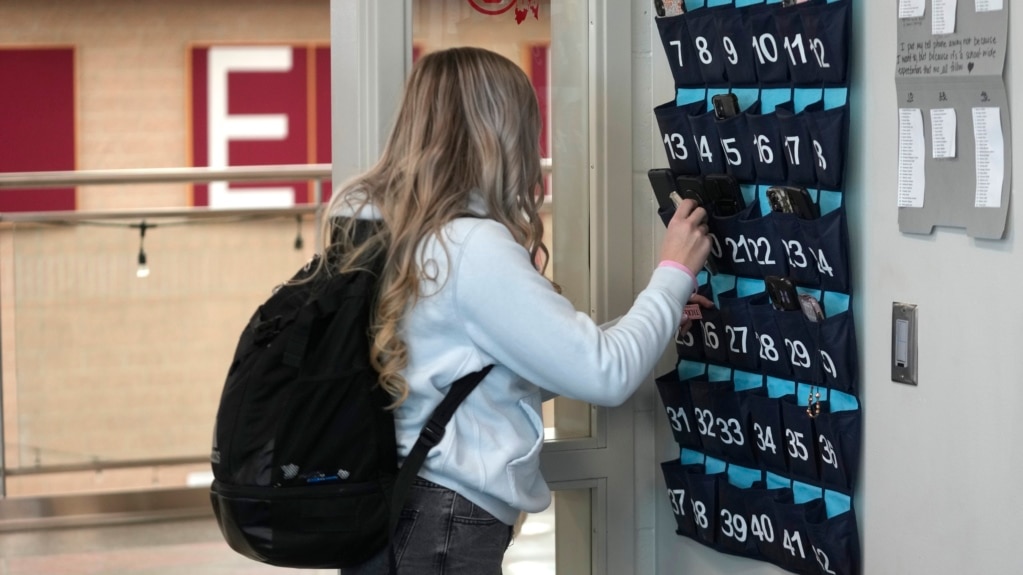American educators and lawmakers are calling for complete bans on smartphone use by students in schools.
Most U.S. schools already have rules restricting phone use in class. But administrators and teachers say the measures are difficult to enforce.
Educators across the United States say students are using their phones to do many things that can distract their attention during class. These include sending messages, gaming, listening to music, watching videos, checking social media and shopping.
Studies in recent years have confirmed high smartphone usage by young people in America. But an increasing number of educators and experts are now beginning to agree that total bans are necessary to solve the problem.
Leaders and lawmakers in a growing number of states have also called for complete phone bans or suggested new ways to limit their use in class.
James Granger is a science teacher at a Los Angeles, California high school. He recently told The Associated Press (AP), “Students used to have an understanding that you aren’t supposed to be on your phone in class. Those days are gone.”
Granger requires students attending his class to place their phones in a special container. “The only solution that works is to physically remove the cellphone from the student,” Granger said.
The latest state intervention on phones in schools came last month in Utah. Governor Spencer Cox, a Republican, urged all school districts and the Board of Education to remove cellphones from classrooms. He explained that studies had repeatedly shown students do better in school when their phones are not available.
The studies, Cox noted, found that learning improves, distractions are decreased, and students are more likely to talk to each other if their phones are taken away.
“We just need a space for six or seven hours a day where kids are not tethered to these devices,” Cox told reporters. He said his urging, which does not have the force of law, is part of a larger legislative push to protect children from social media harms.
Patrick Truman is a high school teacher in Maryland who bans student phone use during class. “Cellphone use is out of control,” he told the AP. “By that, I mean that I cannot control it, even in my own classroom.”
Truman bought a container that can hold 36 phones. But he says that still, every day, students find ways to hide their phones so they can still use them.
Last year, Florida became the first state to strongly restrict phones in schools. A law took effect in July that requires all public schools in the state to ban student cellphone use and block social media services during class. Some school districts went a step further and banned phones for the whole school day.
Oklahoma, Vermont and Kansas also recently introduced what is becoming known as "phone-free schools" legislation.
Two U.S. senators – Tom Cotton, an Arkansas Republican, and Tim Kaine, a Virginia Democrat – introduced federal legislation in December. The legislation would require a government study on how phone use by students affects their mental health and school progress.
The National Center for Education Statistics reports that nationally, 77 percent of U.S. schools say they currently ban phones for non-school use. Education experts, however, say that number is misleading. That is because it does not mean students are actually following the rules or that all the schools are enforcing them.
Many educators and experts say that, for a school phone ban to work, school administrators must be the ones to enforce it.
Some students say such policies take away their autonomy and cut off their main method of communication with family and friends. Opposition has also come from parents who fear they could be cut off from their children if there is a school emergency.
Kim Whitman is a leader of the Phone-Free Schools Movement, a group that advises schools. She told the AP she urges educators to make exceptions for students with special educational and medical needs.
I’m Bryan Lynn.

